
Puri is a coastal city and a municipality in the state of Odisha in eastern India. It is the district headquarters of Puri district and is situated on the Bay of Bengal, 60 kilometres (37 mi) south of the state capital of Bhubaneswar. It is also known as Sri Jagannatha Dhama after the 12th-century Jagannath Temple located in the city. It is one of the original Char Dham pilgrimage sites for Hindus.
Ganeswarpur is an Indian village. The village falls under the Gop block of Puri District. It was founded before 1500 AD by Puri Gajapati Prataprudra Deva.
Konark Beach or Chandrabhaga Beach is situated in Odisha on the eastern coast of India and is considered to be India's finest beach. It is situated three km east of the Sun temple of Konark, in the Puri district in the state of Odisha, India. It is 30 km from the city of Puri. Formerly Chandrabhaga Beach was considered a place of natural cure for lepers. The beach on the coast of Konark becoming India's first to get the Blue Flag certification — a tag given to environment-friendly clean beaches, equipped with amenities of international standards for tourists.
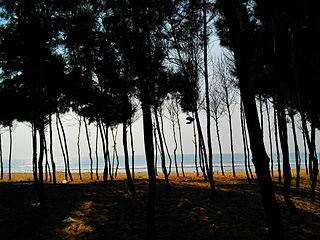
Puri district is a coastal district of the Odisha state of India. It has one sub-division, 11 tahasils and 11 blocks and comprises 1722 revenue villages. Puri is the only municipality of the district. Konark, Pipili and Nimapara are the three NACs in this district. Satyabadi, Gop, Kakatpur and Brahmagiri are major semi-urban areas.

Jatni is a town and a major sub-urban area of Bhubaneswar, the state capital of Odisha. It is also a municipality in Khordha district in the Indian state of Odisha. Jatni, also known as Khurda Road Junction in Indian Railways parlance, acts as an important railway junction between the main railroads running between Kolkata and Chennai, with diversions to the Hindu pilgrimage city of Puri, and to Balangir, passing through the districts of Nayagad, Daspalla, Phulbani, Boudh and Sonepur the vast tribal hinterland of Odisha. It has emerged as a commercial hub with a number of educational and other institutions. It is home to Premier Public Institutes like NISER and IIT-Bhubaneswar and ICAR- International Centre for Foot and Mouth Disease (ICFMD). Jatni is famous for its celebration of the festival of Ganesh Chaturthi.

Ramachandi Temple, is on a beautiful spot on the banks of the Kusabhadra River where it flows into the Bay of Bengal. It is only 5 km away from Konark in the Puri District of Odisha, India. Goddess Ramachandi, the deity of Konark is thought by some to be the presiding deity of this temple, while others thought it to be the temple of Mayadevi, wife of Surya.

Konark Sun Temple is a 13th-century CE Sun temple at Konark about 35 kilometres (22 mi) northeast from Puri city on the coastline in Puri district, Odisha, India. The temple is attributed to king Narasimhadeva I of the Eastern Ganga dynasty about 1250 CE.
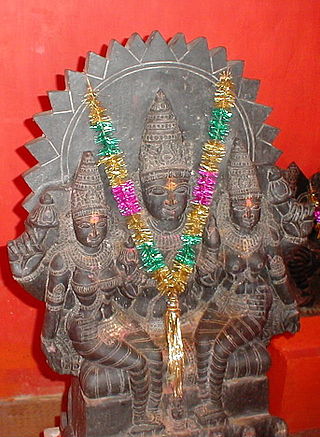
Ratha Saptami or Rathasapthami is a Hindu festival that falls on the seventh day (Saptami) in the bright half of the Hindu month Maagha. It is symbolically represented in the form of the Sun God Surya turning his Ratha (Chariot) drawn by seven horses towards the northern hemisphere, in a north-easternly direction. It also marks the birth of Surya and hence celebrated as Surya Jayanti.
Tourism in Odisha is one of the main contributors to the Economy of Odisha, India, with a 500 km (310 mi) long coastline, mountains, lakes, natural biodiversity and rivers. Odisha is one of the major tourism sectors of India, with various tourists' attractions, ranging from wildlife reserves, beaches, temples, monuments, the arts and festivals. Other than wildlife reserves, beaches, temples, monuments, the arts and festivals, the Odisha Tourism Development Corporation, a Public Sector Undertaking of Government of Odisha, is also developing tourism sector of Odisha and India.
Gangadhar Pradhan was an Indian Odissi dancer.

The Biranchi Narayan Sun Temple, also known as the Abode of Viranchinarayana or the Wooden Konark, is a Hindu Temple located in the town of Buguda in Ganjam, Odisha. It is the second Surya temple constructed in Odisha, after the famous Konark Sun Temple.
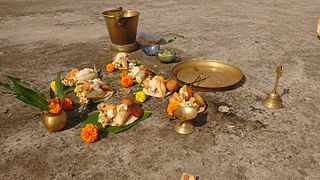
Samba Dashami is a festival unique to the state of Odisha, India. It is celebrated on the 10th day of the Shukla Paksha of Pausha Māsa or waxing phase of moon in the month of Pausha as per traditional Odia calendar. This festival is especially celebrated in the eastern part of Odisha.
Chelitalo was an important port in Ancient Odisha, in northeast India, lying on the Chandrabhaga river in Konark. In ancient times, the Chandrabhaga and Kushabhadra rivers were navigable, and may have been used for the shipping of huge blocks of stone for the construction of the Konark Sun Temple.

Konark Dance Festival is a five-day dance festival held every year in the month of December mostly from 1 to 5 in backdrop of the Sun temple in Konark, Odisha in India. It is one of the biggest dance festivals held in Odisha.

Raghunath Mohapatra was an Indian architect, sculptor, and a Nominated Member of Rajya Sabha. He was awarded Padma Shri in 1975 and Padma Bhushan in 2001. He was awarded Padma Vibhushan in 2013 on occasion of 64th Republic Day of India.

The Kaḷinga architectural style is a style of Hindu architecture which flourished in the ancient Kalinga previously known as Utkal and in present eastern Indian state of Odisha. The style consists of three distinct types of temples: Rekha Deula, Pidha Deula and Khakhara Deula. The former two are associated with Vishnu, Surya and Shiva temples while the third is mainly with Chamunda and Durga temples. The Rekha Deula and Khakhara Deula houses are the sanctum sanctorum while the Pidha Deula constitutes outer dancing and offering halls.

Kasturi Pattanaik is a pioneering Odissi dance exponent, performer, choreographer, teacher, trainer and music composer from India.

A sun temple is a building used for religious or spiritual activities, such as prayer and sacrifice, dedicated to the sun or a solar deity. Such temples were built by a number different cultures and are distributed around the world including in India, China, Egypt, Japan and Peru. Some of the temples are in ruins, undergoing excavation, preservation or restoration and a few are listed as World Heritage Sites individually or as part of a larger site, such as Konark.
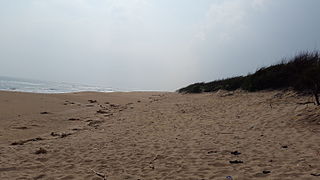
Chandrabhaga Beach is situated three km east of the Sun temple of Konark, in the Puri district in the state of Odisha, India. It is 30 km from the city of Puri. Formerly Chandrabhaga was considered a place of natural cure for lepers. Chandrabhaga beach on the coast of Konark becoming India's first to get the Blue Flag certification — a tag given to environment-friendly clean beaches, equipped with amenities of international standards for tourists.
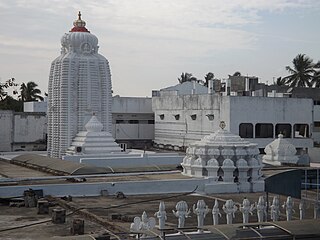
Arasavalli Sun Temple is a temple for Lord Surya, the solar deity, at Arasavalli in the Indian state of Andhra Pradesh. It is located in Arasavalli Village 1 km east of Srikakulam. It is believed that the temple was built in 7th century CE by King Devendra Varma, a great ruler of Eastern Ganga Dynasty of Kalinga. The present structure is largely a result of 18th century renovations. The temple was built in Rekha deula style of Kalinga Architecture like Puri Jagannath temple of Odisha. This temple is considered one of the oldest sun temples in India. The temple is one of the two major temples who worship Lord Surya in India. The other two are the Konark Sun Temple, Odisha and Martand Sun Temple, Jammu and Kashmir.


























